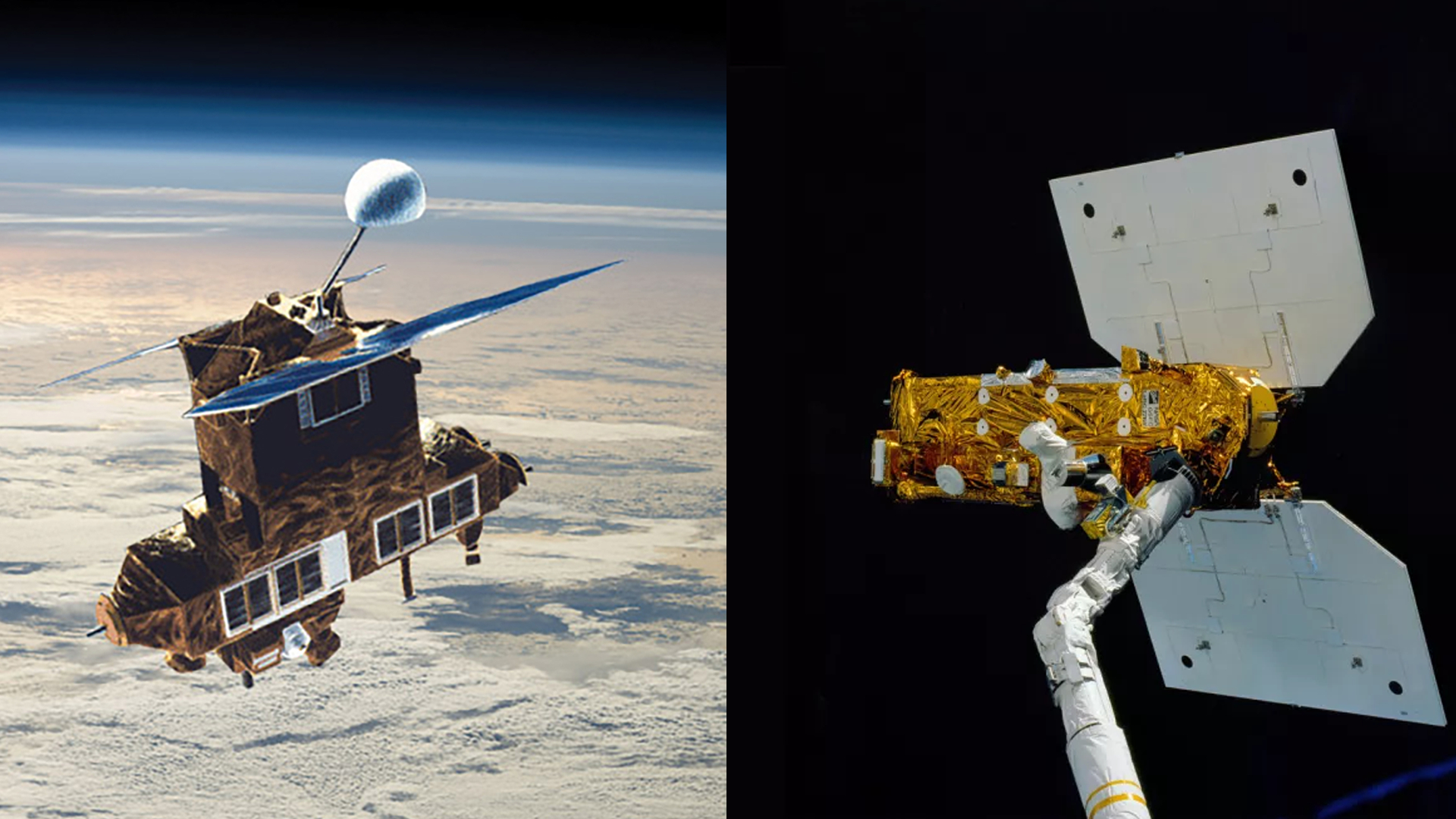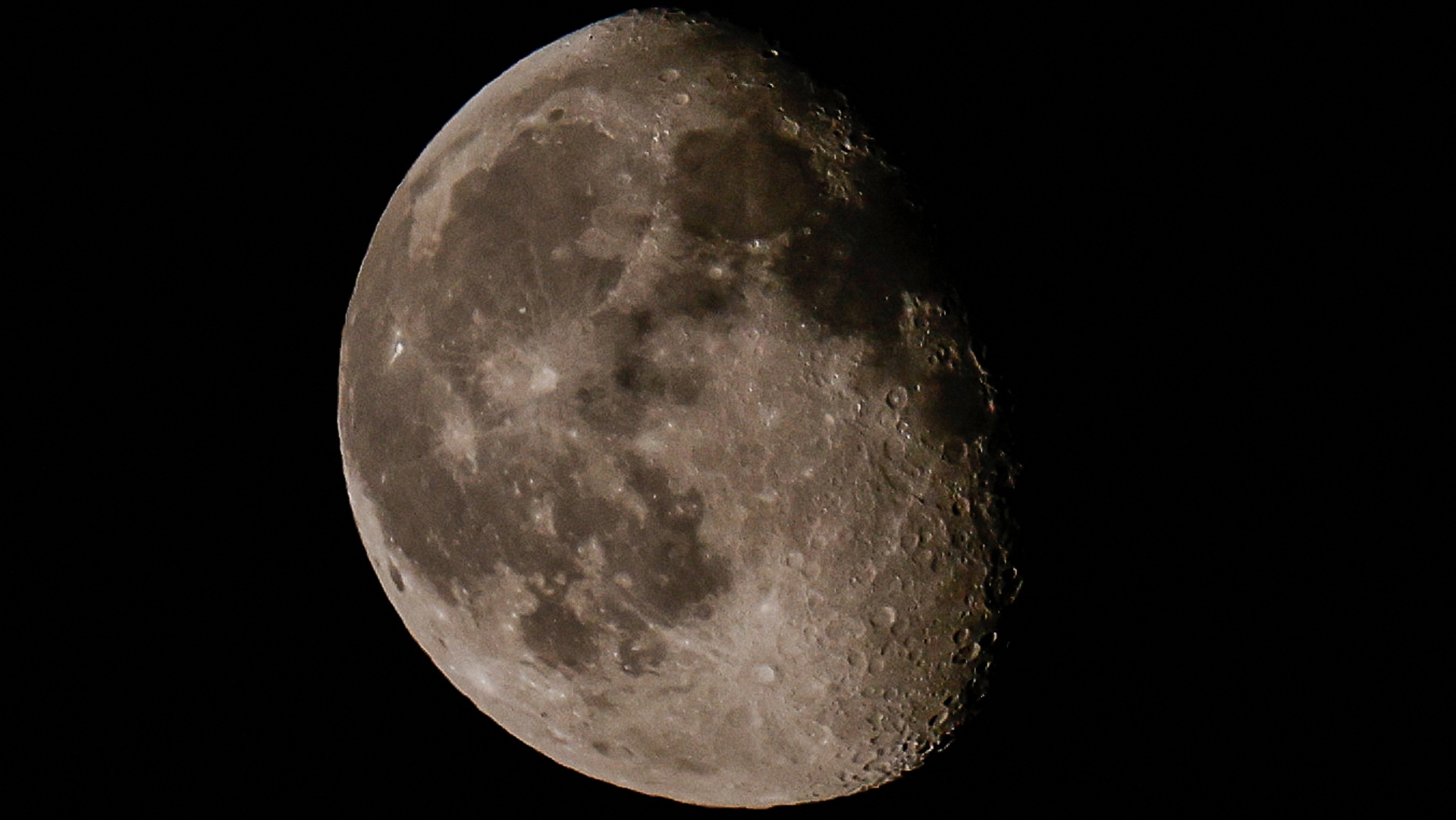A dead NASA satellite from the 1980s just fell to Earth to meet its fiery demise
The 38-year-old Earth Radiation Budget Satellite weighed 5,400 pounds and fell over the Bering Sea.

A vintage NASA satellite launched in the 1980s and long-since turned to space junk met a fiery fate late Sunday as it fell back to Earth, NASA said today.
The huge Earth observation satellite, called the Earth Radiation Budget Satellite (ERBS), plunged back to Earth Sunday night (Jan. 8) at 11:04 p.m. EST (0304 GMT on Monday). The 5,400-pound (2,450 kilograms) satellite reentered over the Bering Sea, with some components potentially surviving the super-hot temperatures of reentry.
"The Department of Defense confirmed that the 5,400-pound satellite reentered the atmosphere over the Bering Sea," NASA wrote in an update on Jan. 9. "NASA expected most of the satellite to burn up as it traveled through the atmosphere, but for some components to survive the reentry."
Related: The Biggest Spacecraft Ever to Fall Uncontrolled From Space
NASA launched the ERBS satellite in 1984 on the space shuttle Challenger to study how the sun's energy was absorbed and radiated by the Earth. The satellite also studied Earth's stratosphere and other atmospheric components such as water vapor, aerosols and nitrogen oxide.
ERBS was part of NASA's three-satellite Earth Radiation Budget Experiment program and was only designed to last two years, ending in 1986. But the satellite lasted until 2005, when NASA ultimately decommissioned ERBS in orbit. After that, it was just another 2.5-ton piece of space junk.
"ERBS far exceeded its expected two-year service life, operating until its retirement in 2005," NASA wrote in its statement. "Its observations helped researchers measure the effects of human activities on Earth's radiation balance."
Breaking space news, the latest updates on rocket launches, skywatching events and more!
Related: Kessler Syndrome and the space debris problem
NASA announced the demise of the ERBS satellite late Friday when it became clear the satellite's fall from space was certain. At the time, NASA said the risk of any debris posing an injury hazard to people on the ground was about 1 in 9,400.
Burning up on reentry may be a fitting demise for the ERBS mission to cap nearly 40 years in orbit, but it is also a reminder of the ongoing hazard space junk can pose in orbit and on Earth.
Last year, China launched two Long March 5B rockets to help build its Tiangong Space Station, one each in July and November, that rained huge chunks of debris on Earth. Each of the launches cast off a 23-ton (21 metric tons) rocket core that made an uncontrolled reentry.
In late December, the Philippine Space Agency issued a warning to the public over falling rocket debris from a different Chinese launch on Dec. 29.
Email Tariq Malik at tmalik@space.com or follow him @tariqjmalik. Follow us @Spacedotcom, Facebook and Instagram.

Tariq is the award-winning Editor-in-Chief of Space.com and joined the team in 2001. He covers human spaceflight, as well as skywatching and entertainment. He became Space.com's Editor-in-Chief in 2019. Before joining Space.com, Tariq was a staff reporter for The Los Angeles Times covering education and city beats in La Habra, Fullerton and Huntington Beach. He's a recipient of the 2022 Harry Kolcum Award for excellence in space reporting and the 2025 Space Pioneer Award from the National Space Society. He is an Eagle Scout and Space Camp alum with journalism degrees from the USC and NYU. You can find Tariq at Space.com and as the co-host to the This Week In Space podcast on the TWiT network. To see his latest project, you can follow Tariq on Twitter @tariqjmalik.

